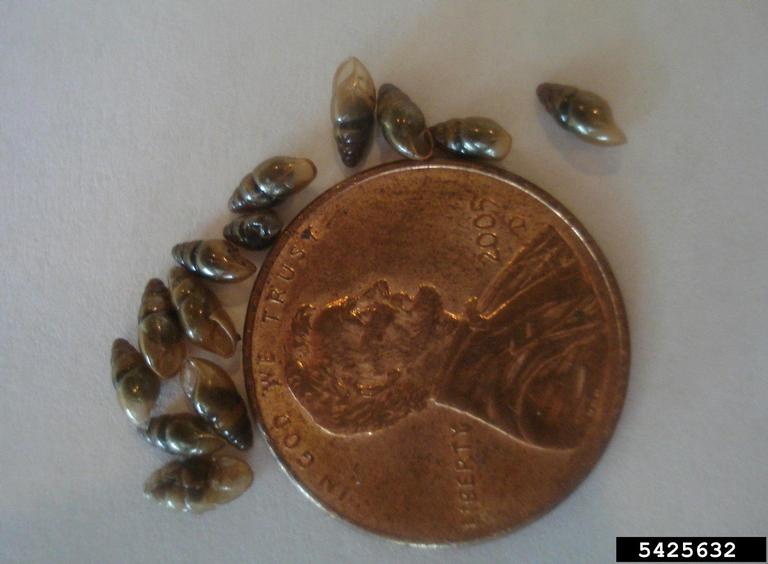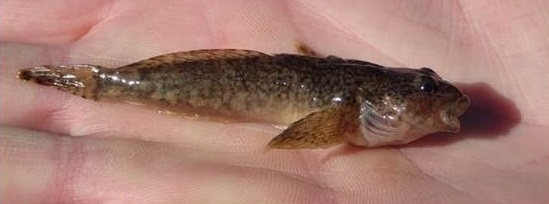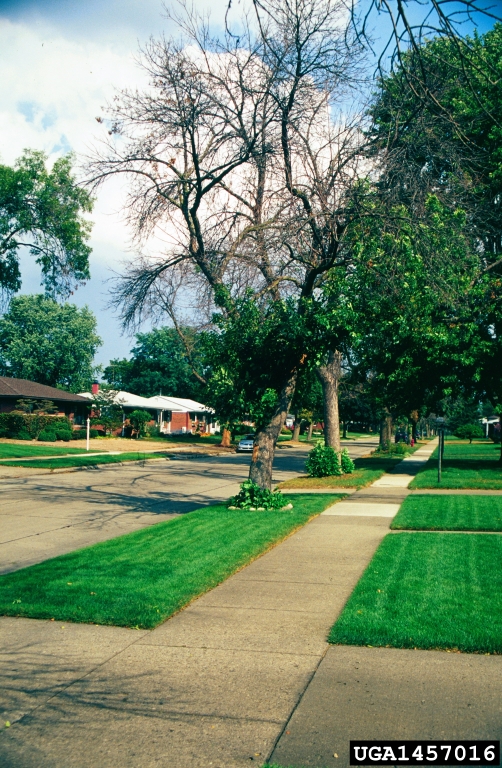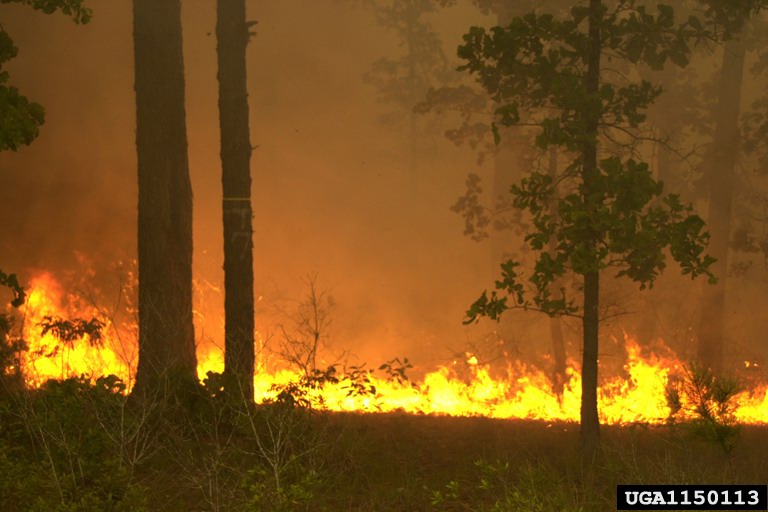Climate change and invasive species are both major drivers of biodiversity loss worldwide. These drivers pose a pressing threat not only to global ecosystems but also to the vital services which they provide.
Species invasions can be amplified by climate change in several ways. Changes in climate can make new habitats suitable for invasion, increased atmospheric CO2 can increase the herbicide resistance of invasive plants, and melting sea ice can create new shipping routes which raises the potential of introduction by species hitching a ride on a boat or its cargo.
Cumulative Impacts on Species at Risk
For example, the New Zealand mud snail may pose a threat to Rocky Mountain Sculpin, a species at risk in Western Canada. Currently, water temperature is a limiting factor for New Zealand mud snail spreading through this region, however increased temperatures predicted under climate change may make these habitats more suitable for this invasive species and increase the threat it poses to Rocky Mountain Sculpin and potentially other species at risk in this region.
In turn, invasive species can potentially worsen the impacts of climate change as they damage or alter ecosystems and increase the number of stressors on native species.


Species at risk must contend with several threats to their population, including habitat loss, climate change and invasive species. Even worse, these threats can overlap to further push population decline. For example, species which need to contend with food or habitat loss due to climate change are further challenged by invasive species competing for these resources. Where a single threat may have been manageable, the cumulative effects of multiple threats may become too much to bear, leading to rapid population decline.
Tree Loss and Invasive Species
Invasive forest pests directly contribute to climate change by decreasing the number of trees available for carbon storage. A 2019 study estimated that trees lost to invasive pests resulted in a loss of carbon storage comparable to carbon emissions from 4.4 million cars!

Not only are trees vital to carbon storage, but they also play an important role in temperature moderation. Urban trees help to protect cities from rising temperatures by providing shade and moderating microclimates which can limit urban heat island effects.
Urban trees can also protect cities from flooding events, which are predicted to increase in frequency under climate change. They do this by catching rainwater in their canopies, increasing soil infiltration rates, and removing water from the soil. They are also important in erosion control through the flood reduction qualities mentioned and because their roots help to hold soil in place.
Invasive insects like emerald ash borer and Asian longhorned beetle and invasive pathogens like oak wilt disease and Dutch elm disease pose a huge threat to forests and urban trees. For example, in Montreal, nearly 90% of the city’s elm trees succumbed to Dutch elm disease between 1970-80, and the city of Toronto had lost 80% of its elm population by 1976. Emerald ash borer, detected in Ontario in 2022, has caused extensive damage to ash tree populations in North America, killing millions of ash trees in Ontario, Quebec, and several U.S. states. Oak wilt disease has not yet been detected in Canada, but if introduced would be a significant threat to oak tree populations.
Replacing these vital urban forests comes with a steep economic cost. Emerald Ash Borer, the costliest invasive species in Ontario, has devastated North American ash tree populations. In the United States, it is estimated that around 17 million trees will need to be removed in the coming decade at a total cost of 10.7 billion USD or more.
Wildfires

Changing climate is causing many parts of the world to become hotter and dryer, increasing the risk of wildfires that threaten humans and wildlife alike. Invasive species can make these fires even worse.
For example, invasive insects like mountain pine beetles can create large numbers of dead trees, which act as a fuel source, making forests more susceptible to wildfires.
Invasive weeds like cheatgrass can change grassland structure in ways that make them more susceptible to fires. In the USA, cheatgrass outcompetes native grass species, which tend to grow in dispersed patches. In their place, cheatgrass grows creating a connected fuel bed across the land that can facilitate wildfire spread.
Join the discussion!

Scientists, environmental managers and policymakers are working hard to protect our environment and society from these joint threats. One great place to learn more is the 2023 Invasive Species Forum which will take place virtually from February 7 – 9, 2023. This year’s theme is Invasive Species Action in a Changing Climate. The Forum brings together invasive species experts and calls attention to invasive species issues, research, and advances in prevention and management happening across Canada and in neighbouring U.S. States. Registration is free! Sign up here.
Resources
Climate Change – Invasive Species Centre
Invasive Species and Climate Change – Canadian Council on Invasive Species (canadainvasives.ca)
Invasive weeds and wildfires — Science Learning Hub
Wildfires, Climate Change, and Invasive Species – Invasive Species Centre
